
In a recent installment, I showed you the 1958 Mercury Park Lane–the super-luxury automobile introduced by Mercury to compete with cars priced just below Lincoln and Cadillac. Now it’s 1959 and we have a new Park Lane–longer, wider, and more dramatically styled than ever!
This is one amazing automobile which looks right at home in this beautiful Mid-Century Modern setting.
There is a fantasy/dreamlike quality to the whole scene. The car looks alert, eager–itching for action. Is it real? Yes, it is–and oh, so rare!
The oblong reflectors were optional. Not all ’59 Mercurys had them. The pale pink color is known as Bermuda Sand. Can you imagine this rocket ship parked in your driveway?
Care to step inside? Oh, it’s beautiful–so spacious . . . such subtle color contrasts. It is like a “dream car”.
This is your view behind the wheel. So futuristic! Is this the year 2000? No, we’re still safe back in 1959.
So many dials, switches, and controls. Do you need a pilot’s license? No, you’ve read the owner’s manual. You know what to do. And doing it is easy, because everything is so intuitive and well-designed.
The source of smooth, ample thrust under your toe–the mighty 430 cubic inch V-8 engine shared with Lincoln–345 horsepower! All power assists included for carefree driving ease.
You would think that by offering the public such luxurious, exciting cars that Mercury sales would take off like the rockets they resembled. There was a slight improvement in 1959–150,000 sales vs. 133,000 in ’58. Competitors Pontiac and Oldsmobile were doing a lot better. Nevertheless, 12,523 Park Lanes found takers–up 3,271 from last year. So Park Lane was experiencing some measure of success.
Mercury resorted to setting cars on fire in an attempt to “spark” sales!
Come 1960, and Mercury gets a heavy restyle, but still uses the same body and chassis. Sensing that the public was tiring of sharp edges and exaggerated rocketry, the stylists “smoothed out” the body lines in a way that looks sen-saysh in the brochures…
…but can look kind of odd and roly-poly in real life. Those taillights are really something–let’s just say it has its own personality–a new take on ’50s Googie!
The new grille is quite minimalist, and is actually prophetic of designs that are yet to come. A distinctive new Mercury look!
Inside, the Space Age still reigns supreme! One change–we now have an ornate needle speedometer in place of the red/green ribbon.
These Mercurys (and especially the Park Lane) offered high levels of roominess, comfort, silky smoothness, and ample power. You would think the public would be flocking to Mercury dealers to buy one. But nooooooo….!
People were flocking to Mercury dealerships–not necessarily to buy the big luxo-Mercs, but this–the all-new compact Comet.

In many ways, the Comet was very unlike the big Mercurys, even though it shared some of their styling cues like the grille, taillights, and a scaled-down version of the space age dashboard. While Monterey-Montclair-Park Lane were big, silent-running, magic-carpet riding chariots with lots of power (and power assists), Comet was 2′ shorter, 10″ narrower, with a tiny 6 cylinder engine that wound up like an egg beater when you stepped on it. Yes, this compact was smaller and could park in tighter spaces, but its rubbery manual steering robbed it of the handling ease one would have wanted. You might get 20 MPG in a Comet, instead of maybe 11 in the big Merc. The Comet ride was, by comparison, stiff and choppy (but somewhat improved in later models). But perhaps most of all, Comet was CHEAP–typical delivered prices were in the low $2000 range, while the full-size Mercurys ranged from $2800 to $4200. As one auto executive put it, “If the public wants to lower its standard of living, we will accommodate them.”
L-M planners must have looked at the sales results for 1960 and concluded: “Most of our sales are in the low-priced range. Let’s just axe the expensive stuff–concentrate on volume.” Total big-Mercury sales were up a meager 5,000 units from ’59, while Park Lane sales fell from 12,000 to 10,000. Park Lane, which was showing some gains in ’59, was again languishing.

Thus for 1961 a new kind of Mercury arrived. While the front bumper and grille (and a few other things) were based on the all-new 1960 design, these were very different cars–with bodies and chassis shared with Ford. This kind of made sense given that the 1960-61 Fords were such BIG cars–why make an even bigger Mercury? And all the engines were Ford, not the exclusive Mercury V-8s of yore. After all, a V-8 engine is a V-8 engine–just make one series of engines and put them in both makes–who cares anyway? And–surprise, surprise–Montclair and Park Lane are dead! Now we have Meteor 600 and 800 (competing car-for-car in the low-priced field), and Monterey, priced at $2800-$3200. “If the public wants cheap, we’ll give it to them!”
Three years go by, and a strange thing happens. It’s 1964, and Park Lane (and Montclair) have risen from the dead! I guess the Mercury people realized that the medium-priced market had recovered enough for them to start offering higher priced, more luxurious cars once again.
If you wanted to buy a car that still had some of that ’50s Jet Age whiz-bang, this would be a good choice. You can see it in the sharp, fast fender lines that suggest fins; the jet taillights (now oblong); and yes, that reverse-angled power-operated rear window, à la Turnpike Cruiser and the 1958-60 Continentals.
The distinctive styling of this car makes it pretty certain no one’s going to mistake it for a Ford.
Inside, it appears that Park Lane has upheld the tradition of giving you Cadillac-type luxury at a lower price. And the price was low: approx. $3400 for most models. That’s about $400 to $600 less than the 1958-60 Park Lanes. Does that make this car a terrific value? Apparently so, since 18,764 Park Lanes were sold in ’64–double the previous record.
Park Lane continued through 1968, after which it was upstaged by another new nameplate, Marquis. Park Lane ended its career with a decidedly unusual option: “Yacht-Deck” imitation wood paneling on the bodysides. After all, why limit this beautiful feature to station wagons alone?

It’s kind of a shame that Park Lane never achieved the fame and recognition of other names like “Galaxie” or “Cougar”. I think Mercury was at its best when producing cars that were distinctly different from and more luxurious and sophisticated than Fords–even if they shared a fair amount of componentry. But as history tells us, building great cars does not necessarily translate into higher sales. In later decades, corresponding Ford and Mercury models became so badge-engineered and alike that Mercury lost its reason for being. The last Mercury, a Grand Marquis, rolled off the assembly line on January 4th, 2011.
Further CC Reading:
Vintage Ad: Wow; That ’59 Mercury Really Does Have A Giant Windshield! by Paul Niedermeyer
Curbside Classic: 1959 Mercury Monterey: A Little More Chrome Please by Longrooffan
Curbside Classic: 1959 Mercury Monterey Cruiser Hardtop Coupe–Mercury Spreads Its Wings And Crashes by Paul Niedermeyer


















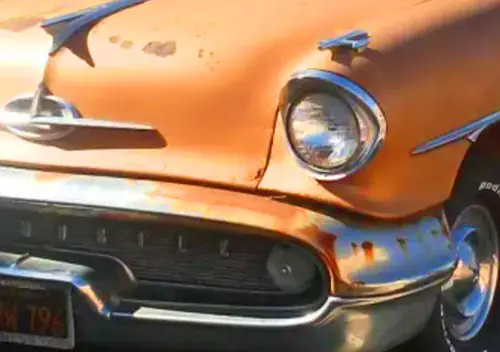
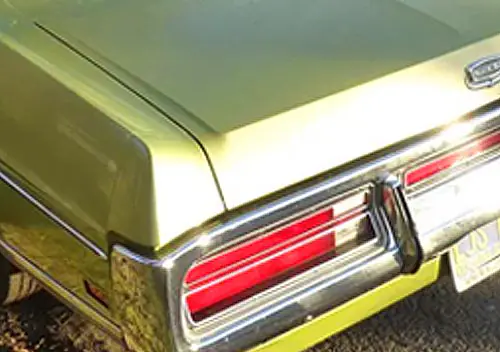
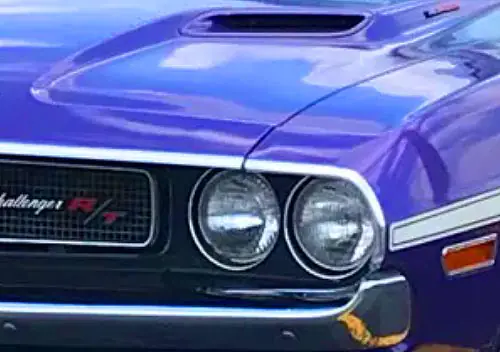


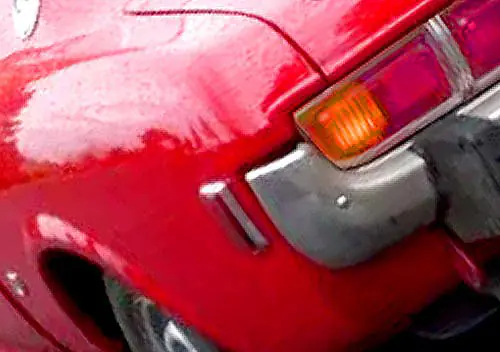

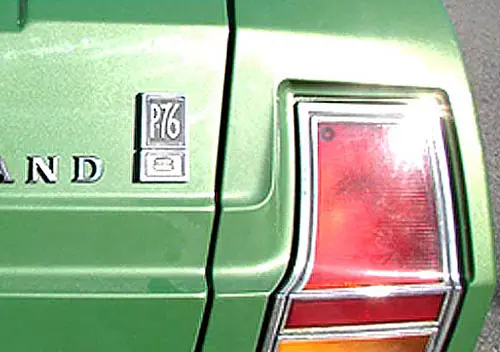
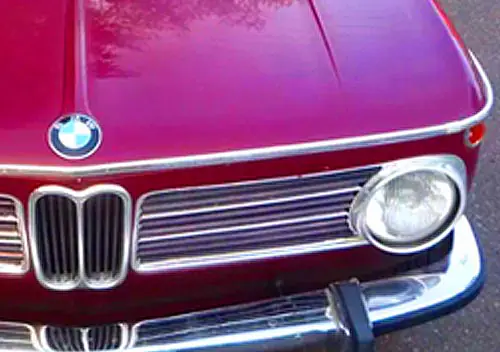


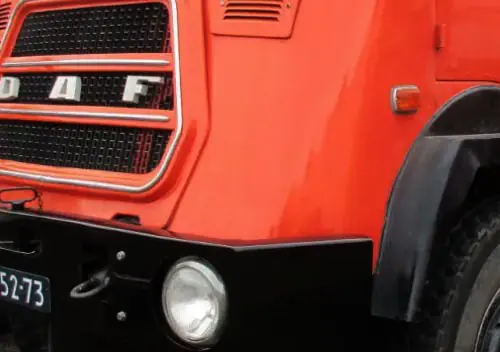
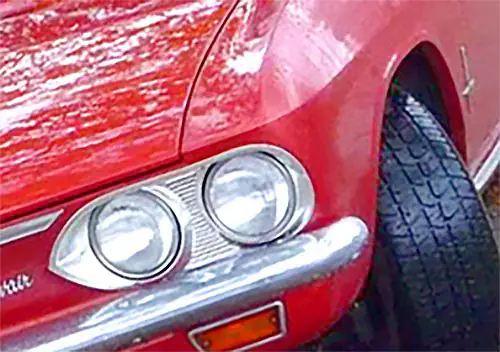
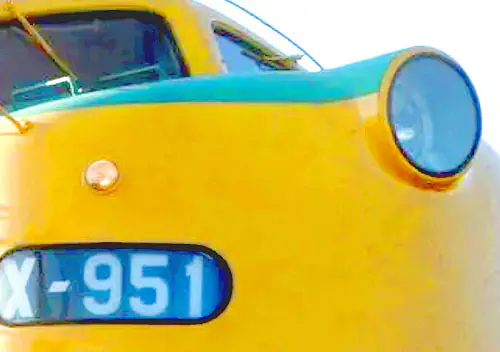
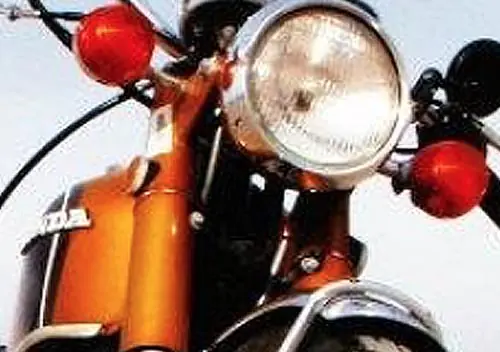
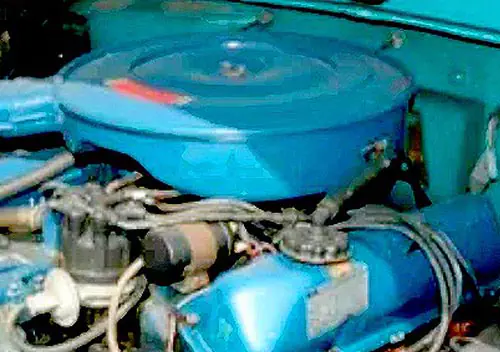



’59 Park Lane. Unreal. Beats ’59 Cadillac I reckon yet what brand sold more? The image depicted looks like a model car, it is so precise and sharp. What an outstanding beauty. Lucky owner. 🙂
Oh, so much here! I am going to confess that while I think the 59 is a smidge overdone, the 60 is one of the coolest designs ever to come from FoMoCo. The word “unique” gets overused a lot when applied to old cars, but the 60 Mercury is unique.
I would love to understand Ford’s late 50’s fascination with front-hinged hoods. That always seemed to me to make access extra tough. Another interesting fact on these is that they are among the very first postwar designs that replaced “clapper” windshield wipers with those wiping in parallel.
“Never needs waxing” is one of my favorite automotive tropes. That one was evergreen for decades, whether in ads or in owners manuals. And always a lie because those finishes never held up without at least semi-regular polishing.
Front hinged hoods were about safety, or so they said.
Great colors then, wish car still had them.
So much pink. So much chrome. So much absurd tailfin. Parked next to that midcentury modern house, this is a Barbie California Dream set in real life.
Yes! If it’s going to be pink Bermuda Sand, might as well be all absurd! I just love the 59 Park Lane!
Love the photography of the first cr & house……
Just wonderful!
My heart still skips a beat for the `60 Park Lanes vs. the `59 models. The redesign IMHO was better, having given up the ‘web foot’ taillights and made chrome more tasteful. The `60 Mercurys were the last to have their own platform too, as they shared the Ford body from `61 on. I always thought that was a mistake of sorts, but the bottom line dictates all I guess. I’d love to own a `60 Park Lane 2dr. hardtop!
I’m just the opposite and much more prefer the rear of the 1959 over the 1960.
While the 1959 Pontiac would be my first choice for that year, I could still go for the Park Lane as second, mainly due to the roof and rear window.
Agree 100%. (well, I’d take any of them actually).
The 60 Isn’t all bad, side profile looks great, front- great. The thing that ruins it for me, is the chubby melty look of the rear for 60. Now, it’s neat and different, yes, but makes the ‘thin’ (compared to early 50s) look so thick & heavy in the rear, compared to crisp/sharp GM styles of the times. Again, it’s just that rear.
The melty, droopy look reminds me of the original falcon too.
Again, I’d own & drive ANY of these , and with pride, although, I’d prefer the top “subject car”.
That 1959 film is fantastic. The whole pitch reminds me of those guys who sell the Miracle Shammy vegetable peelers at state fairs. Sales hyperbole is a forgotten (and not necessarily missed) American art form.
The “Never needs waxing” line’s modern equivalent I guess is the “lifetime fluids” that my car supposedly has.
Well, the commercial predicted that we’d still be seeing these 1959 Mercuries in 1969, so I suppose the idea would be that one could check for themself if the finish held up that long. Only…I recall 1969 pretty well, and I definitely don’t recall seeing a lot of 1959 Mercuries.
My first thought upon seeing that commercial was the implication that the 1959 Mercury would catch on fire more than other cars and, when it did, at least the paint finish would remain intact.
The few late 50’s Mercurys I saw growing up were not only serious rusters, but that “Space Age” styling very quickly dated. By ’65, the big Mercs were well – styled and attractive: Dad seriously considered a nicely equipped ’67 Monterrey sedan (and with the last iteration of the “Breezeway” rear window!), but eventually a ’67 Fury III sedan was chosen…
Seen at a car show last weekend. It might be a lowly Monterey 2 door sedan, but it still rates 3 hood ornaments. That back glass seems strangely reminiscent of a Studebaker.
IMO FMCS BIGGEST mistake was Dropping MERCURY and LINCOLN Town Cars.And most believe EDSEL was a mistake? 🤪 😜 🤪
All very nice, I’ll take a 1961 two door hard top in the advertised yellow please…..
-Nate
It might be pointed out that Mercury saw the writing on the wall by 1959 and reduced prices in 1960 as well as axing the extra-long 128″ wb Park Lane chassis/body. They now advertised it to be very price competitive with the low-priced brands.
Soooooooooooooo much COLOR, not WGB (WhiteGrayBlack), and on highly “styled” sheetmetal that does NOT look like it has already been in a multi car accident, as many of TODAZE SUV’s do! Plus color matched interiors not basic blACK as is the only offering on many of the current vehicle selection.
What will they think of next???!! 🙂 Gee, even my olde 1988 Camaro IROC-Z had color both inside and out…… DFO
Those top shots are amazing! 59/60 Mercurys are super cool, though I’d vote for the 59 over the 60, stylewise. Even though they lost the separate platform, I agree that the cleaner early 60s designs were a step forward.
I don’t know that I’d say everything about the dash is intuitive. The power seat switch on the dash is pretty odd, and you’d have to read the labels to know to push left to go “fore” and right to go “aft”. “Up” and “down” are natural enough, except with the switch in front of me, I might tend to think pushing it toward the front of the car (up) would make it go forward. Oh well, it looks like by 64 they had figured out that the most intuitive spot for a power seat switch is on the side of the seat.
It also looks like there is no master control for the power windows on the driver door. If you want the other windows down and there are no passengers, do you have to reach around to every switch?
Not that I mean to nitpick it to death. Fantastic car!
The power window switches were on the extreme left of the wraparound dash:
As one auto executive put it, “If the public wants to lower its standard of living, we will accommodate them.”
Reminds me of a salesman back in January 1986 when I was looking at the 626. I’m in San Jose and go to a dealer with my girlfriend. I see their price with a salesperson walking up to me naturally. I say the car is blah, blah less at Val Strough in Oakland. He says “well if they want to prostitute themselves then they can.” Well F you buddy cause if I want to walk I will straight to Val Strough.
The photos of the Bermuda Sand ’59 are spectacular; can you imagine how many heads would turn if you drove by in that car today?
Still, I prefer the somewhat toned-down ’60 models with the much more modern-looking front end.
It appears Mercury was trying to top GM in 1959-60 with that wild wraparound windshield, but I think GM’s comes off as more graceful.
I was born and raised in Southern California in Newport Beach. I was a teenager in the mid sixties. My oldest brother had a’60 Monterey in 1966. We would cruise Van Nuys Boulevard or drive down to Laguna. The Mercury rode beautifully. It was a great shade of sand / tan.
Thanks for the memories.
I would guess that a black 1959 Park Lane could have played a role in the back story of Steve McGarrett in the original ‘Hawaii Five-0’.
Hawaii is freshly minted as the 50th state & Steve McGarrett is appointed the head of the freshly minted Five-0 State Police force, issued a shiny new black 1959 Mercury Park Lane…
The 1957-59 Park Lane’s have always been my favorite jet-age styled Mercury’s but the 1960 Park Lane is perhaps my all time favorite. My only nit could be for such an upscale car the interior upholstery patterns could have been a little less Ford and a little more Lincoln.
I love the commercial setting fire to the 1959 paint. Regarding the executives comment about lowering standards that reminds me of my one and only experience with BMW. It was the mid 1990s, I had recently finished my first mid-life crisis of completing my graduate degree, under contract to write a book based on my thesis, and was wrapping up my fathers estate after his passing. Just hired as a professor requiring an out of state move. Most all my previous moves, there were many, I would hitch up a U-Haul to carry the essentials with me while a moving company would follow with furniture sometime weeks later. So I thought to myself: new career, new job, new state, perhaps I need a new car for the trip. I love convertibles and thought BMW had a nice convertible. So I go to the BMW dealership, said to the sales associate I was interested in a convertible and what was its towing capacity. The sales associate said to me BMW does not make cars to tow anything. I turned and walked away. That was my first and last experience with BMW. I was only in their showroom for five minutes, could have paid cash for a new car, but will never go into another BMW showroom again.
M-E-L Product Planning was operating as if no one was coordinating any of their efforts among the three lines. Although there was platform and component sharing, the price segment and content overlap as well as the major gaps was insane. Once the Edsel Citation was deleted, the Mercury Park Lane was sized and priced to compete with both Olds 98 and Buick Electra. That was a bit of a stretch for Mercury which had only competed with Buick Special and Century a couple years prior. Management expectation that upper-medium priced buyers with established brand loyalty would switch to a Park Lane was unrealistic. Three model years was insufficient time for the upper-medium segment buyers to accept the Park Lane as equivalent to the 98 or Electra but L-M management did not understand that concept, nixed it before it had a chance.
The 1959 Park Lane configuration was essentially that of a luxury car of just a couple years prior, the size of the 1957 Lincoln. Since a platform of luxury car size was now tooled and already powered by the 430 ci powertrain, the common-sense next step was to move the 1961 Lincoln over onto the 1959-’60 Mercury platform to forestall the problems now known from building such a large car as a unibody. A platform sharing program for a 1961 Mercury Montclair and Park Lane would have kept Mercury more competitive with Pontiac Bonneville and Dodge Polara/Custom 880. Parallel could have been the Ford-based 1961 Mercury Meteors and Monterey to duel in the lowest-medium segment. Thunderbird volume was now building at Wixom, Lincoln returning to body-on-frame would have open the prospect to more body styles selection rather than the only two for 1961.
The downsizing and down-marketing of the 1961 Mercury was nothing more than FoMoCo management copying the 1960 Dodge Dart program model for model. Meteor = Dart; Meteor 600 = Seneca; Meteor 800 = Pioneer and Monterey = Phoenix. 1960-’61 Dodge Darts were merely restyled Plymouths; the 1961-’62 Mercurys restyled Fords. While Dodge saw boost in sales, at Plymouth’s expense, Mercury was rewarded with 120,088 sales versus 158,000 for 1960. “The Better Low-Priced Car” program was a disaster; 1962 worse: 106,009, minor recession notwithstanding. Lincoln-Comet-Mercury dealers lived on Comet sales to survive. It was bad enough they were saddled with Edsels for the second and third failing years, but fortuitously were thrown the Comet as a lifeline. But then came the intermediate-sized Meteor which was another Edsel for them to peddle. All this while watching Pontiac climb to third in industry sales.